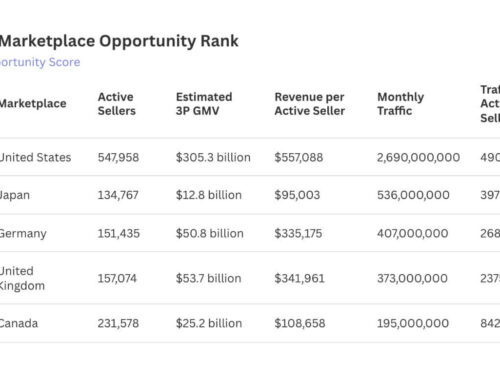ECU helping manufacturers prevent pollution through new grant
October 23, 2025
East Carolina University’s Center for Sustainable Energy and Environmental Engineering (CSE3) received validation of its work to prevent pollution through a new $652,000 grant from the Environmental Protection Agency.
The center received grants totaling $1.2 million in 2023 and 2024 to help manufacturing facilities reduce or eliminate waste and pollutants from their processes. The result is improved profitability for the businesses and less pollution in the environment.
“This funding is a clear recognition of both the impact and value of this project,” said Dr. Tarek Abdel-Salam, engineering professor and director of the center. “For CSE3, it validates our ability to deliver measurable environmental and economic benefits to North Carolina’s manufacturing sector — reducing hazardous substances, emissions and water use while generating cost savings for industry. It also highlights the strength of our model, which integrates faculty expertise, student training and partnerships with state organizations to provide on-site technical assistance, pollution prevention assessments and workforce development.”
Abdel-Salam said the best way to prevent pollution in manufacturing is to never let it start.
“Industrial pollution prevention means reducing or eliminating waste and pollutants at the source, before they are created, rather than treating them afterward,” he said. “In manufacturing, this includes using safer materials, improving energy and water efficiency, and optimizing processes to cut waste, lower costs and reduce environmental impact.”

Dr. Marly Irby, an environmental and pollution prevention specialist, tests equipment the Center for Sustainable Energy and Environmental Engineering uses during visits to manufacturing facilities to help prevention pollution. (Photo by Steven Mantilla)
Finding Solutions
The center’s faculty, staff and students conduct site visits of manufacturing facilities. They observe the manufacturing process, collect data and produce reports with recommendations on how businesses can prevent pollution and improve their bottom lines.
“One of the suggestions we make all the time is the use of occupancy sensors,” said Katie Sperry, a CSE3 student worker and engineering major from Raleigh. “Especially in larger companies, they have a lot of lights that are constantly on when they don’t necessarily need to be because no one is in a room. Having an occupancy sensor makes it so the lights can be off if no one is in that room, but they come on when someone walks in. There can be a lot of savings in electricity there.”
Sperry, whose concentration is in electrical engineering, knows the difference that can make to the environment.
“Decreasing their electricity usage is more than decreasing their bill,” she said. “Thousands of kilowatt hours is a decent amount of electricity, but when you add everything up, they can save thousands and thousands and thousands of kilowatt hours. You can call up a greenhouse gas calculator and see that it can add up to a couple of hundred tons of CO2 (carbon dioxide) that’s not going into the atmosphere.”
Leaks in air compressors and coolers as well as poor pipe insulation can also be sources of waste, Perry said. Beyond that, the center also recommends safer alternative chemicals to more harmful ones used in some facilities, she said.
After the site visits, CSE3 faculty, staff and students examine the collected data. They then produce a comprehensive report that details pollution prevention strategies that can reduce the use of hazardous chemicals, lower carbon dioxide emissions, decrease water consumption and thus produce cost savings for the facilities.
The grant also allows the center to host online and in-person technical courses with industry experts to help manufacturers. Additionally, workshops provide industry leaders opportunities to network and learn more about pollution prevention.
Student Experiences

Engineering students Bryan Mendoza and Katie Sperry work in the CSE3 student office in the Rivers Building. Their duties include analyzing data collected from visits to manufacturing facilities and compiling pollution prevention recommendations. (Photo by Ken Buday)
Bryan Mendoza, a senior from Middlesex, said his environmental engineering concentration made joining the CSE3 team as a student worker a no-brainer.
“I do plan to do something like this,” he said. “I want to help industries save energy, which is good for the environment. That’s why I applied here. I’m debating if I want to do wastewater or water treatment, or maybe consulting, data research or hydrology. It just all depends.”
Ash Davis’ concentration is in biomedical engineering, but the junior from Youngsville said attending the technical courses has allowed her to interact with professional engineers and to learn professional communications skills. Her role with the CSE3 team includes producing a newsletter and spreading the center’s work through social media.
“I think students want to hear what we’re about, especially if they’re in biochemical or environmental concentrations for engineering or even the environmental sciences,” Davis said. “We’re kind of a quiet center, so we’re trying to get ourselves out there or at least inspire others to act more in line with our goals for pollution prevention. I think we do good work.”
Sperry had the added benefit of a 12-week internship at a facility where she collected data and wrote recommendations on pollution prevention and energy use.
“That was a good experience in terms of seeing what a plant or manufacturing site looks like and working with actual engineers,” she said.
She said a recent career fair provided evidence that her work with CSE3 will benefit her upon graduation.
“A couple of the companies I talked to, my background in CSE3 was something they really appreciated,” Sperry said. “Me having this experience of doing energy assessments, taking data and writing recommendations based off that data is something that a couple of companies — especially ones that do more consulting — really appreciated.
Teamwork
The EPA pollution prevention program grant runs through July 31, 2027. The center, part of the College of Engineering and Technology, worked with on-campus and off-campus partners to obtain the grant.
Those on campus include faculty and staff from the Center for Innovation in Technology and Engineering and the departments of engineering, technology systems and construction management in the College of Engineering and Technology; the Department of Marketing and Supply Chain Management in the College of Business; the Department of Economics in the Thomas Harriot College of Arts and Sciences; and Merrill Flood, ECU’s director of research and innovation campus development.
Off-campus partners include the Clean Energy Technology Center at N.C. State as the sub-awardee; Pitt County Economic Development; the Greenville-Eastern North Carolina Alliance; and city managers and county developers across North Carolina.

A thermal sensor is tested in the student offices of the Center for Sustainable Energy and Environmental Engineering. (Photo by Steven Mantilla)
More Stories
Search
RECENT PRESS RELEASES
Related Post


